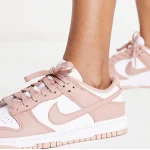Fifty members of the OIA Eco Working Group (EWG) met in Boston last week to begin the hard work of hammering out the process for developing the outdoor industry’s first Eco Index. The meetings objectives were to develop a shared vision and understanding of the Eco Index, and its development process and to form subgroups and develop work plans to support the Eco Index development.
The definition of “Eco Index” was revised to better reflect what the components of the tool will be. As agreed upon by the EWG, the Eco Index is an outdoor industry environmental assessment tool and the index will initially include materials, product manufacturing and packaging. It was agreed that the Eco Index will contain three separate components; guidelines, metrics and scoring. The three components will be developed in a tiered manner, beginning with development of guidelines, then identifying areas of highest priority, developing metrics and finally scoring for the areas of highest priority. The intent is that three components can be used together or separately, depending on the needs/desires of the company as follows:
Guidelines: These are qualitative principles and/or best management practices and broad in scope, to be used as an educational tool, promoting continuous improvement for companies and suppliers.
Metrics: These are essentially units of measure, and include an industry-wide common methodology of calculating the metric; to be used to assess environmental impact and measure improvement; and where appropriate, references existing tools.
Scoring: These are performance measures, to be used to inform product design such that environmental impacts can be considered in addition to performance, costs and other factors.
As a first step, the voting members of the EWG voted unanimously to adapt a universal set of sustainable packaging guidelines for the industry.
Developed through collaboration with retailers, industry, manufacturers, government, waste/recyclables managers and third party consultants, the Outdoor Industry Sustainable Packaging Guidelines are designed for brand managers to use to develop consumer packaged goods. The information provided in the guidelines will help to reduce raw material usage, identify innovation and solutions to be shared across product categories, design for end-of-life and reduce our waste impact on the environment.
During their meeting in Boston, the EWG also formalized the development process of the index, including guiding principles, work group code of conduct, decision making process and the structure of the EWG.
Coming out of the meeting, three new subgroups were formed; Environmental Lenses, Materials and Product Manufacturing. It was decided that the Footwear, Equipment and Apparel subgroups be disbanded, at least for the time being. Current subgroups of the EWG now include:
Environmental Lenses Subgroup (new)
Packaging Subgroup (new)
Materials Subgroup (new)
Product Manufacturing Subgroup
Funding Subgroup
Stakeholder Subgroup
Communication/Media Subgroup
New subgroup description and co-chairs include:
Lens (Metrics) Subgroup
Co-chairs: Colleen Kohlsaat, Levi Strauss and Co. and Peter Girard, The Timberland Co.
Description: Develop metrics for each environmental lens (water, waste, climate, chemistry, etc.) identified in the Framework 2.5.1 document.
Materials Subgroup
Co-chairs:Chuck Haryslak, Polartec and Derek Campbell, Brooks Sports, Inc.
Description: Develop new and identify existing guidelines/best management practices and metrics for materials; identify measurement protocols specific for materials for each metric and performance measures and associated scoring.
Product Manufacturing
Subgroup Co-chairs: B. James Bottoms, Mountain Hardwear, Inc. and Betsy Blaisdell, The Timberland Co.
Description: Develop new and identify existing guidelines/best management practices and metrics for product manufacturing; identify measurement protocols specific for product manufacturing for each metric and performance measures and associated scoring.
In addition to managing the overall project, the next steps for convener Zero Waste Alliance (ZWA) include making the website more user-friendly; developing and implementing a plan for external stakeholder engagement; surveying members and creating a map of EWG member expertise and delivering a draft of Phase 2 Detailed Project Plan to EWG by the end of the year.
The working group has an open membership, encouraging participation from all companies throughout the supply chain. In order to have “voting” rights, however, a company must pay an annual participation fee. Dues are levied on a sliding scale based upon corporate revenue and OIA membership.















